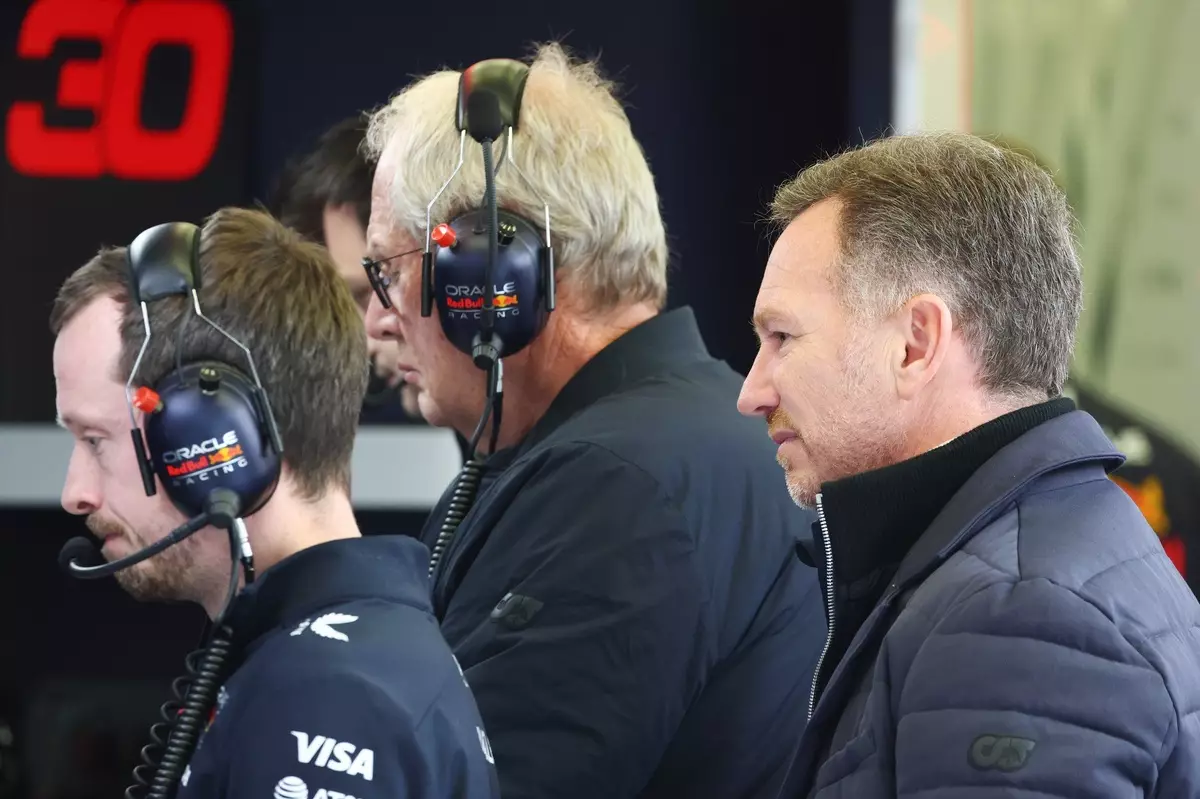Red Bull’s Race Against Time: Bridging the Gap Between Data and Dynamics
In the fast-paced and exhilarating world of Formula 1, where every millisecond counts, translating data into performance is not just an advantage—it’s a necessity. As someone who has always been fascinated by the precise engineering and strategic finesse of F1 racing, I find the current challenges faced by Red Bull Racing particularly captivating. Recently, Christian Horner, Red Bull Racing’s principal, likened their situation to “looking at two different watches.” This metaphor perfectly encapsulates the team’s struggle in aligning their wind tunnel data with actual track performance.
Despite the undeniable talent of Max Verstappen, who recently claimed victory at the Japanese Grand Prix, Red Bull’s narrative this season has taken a dramatic turn. What was once a tale of dominance now reflects a struggle to maintain relevance amid evolving challenges. It feels like watching a gripping drama unfold, where each race adds a new layer of intrigue and complexity. But as we dive deeper into the 2025 season, it’s becoming increasingly apparent that these inconsistencies are more about engineering than driver skill.
Key Takeaways
- Red Bull Racing is grappling with discrepancies between wind tunnel data and track performance.
- The team is focusing on strategic transparency and innovation to address ongoing challenges.
- Current regulations limit major changes, making it crucial for Red Bull to optimize their existing setup.
Crisis Management in the Pit Lane
The Bahrain Grand Prix served as a wake-up call, starkly highlighting Red Bull’s limitations and prompting urgent discussions among the leadership team. For Horner and his crew, navigating these complex dynamics means more than just identifying problems; it requires crafting effective solutions that translate seamlessly into real-world performance. This strategic pivot towards transparency signifies a critical shift within the organization. By openly acknowledging their shortcomings, Red Bull hopes to foster resilience and spur innovation within their engineering approach.
Yet, despite previous efforts to address technical issues, the revelation of ongoing problems raises deeper questions about their wind tunnel technology’s effectiveness. Horner has noted that while set-up adjustments can temporarily mask performance flaws, these are not long-term solutions. The Bahrain race exposed vulnerabilities that had previously gone unaddressed, underscoring the importance of refining predictive models and truly understanding the physics governing their cars on track.
The Root of the Disconnect
The crux of Red Bull’s conundrum lies in the disconnect between empirical data derived from wind tunnel tests and actual performance metrics observed during races. As Horner articulated, it’s like navigating an engineering enigma where substantial technical resources and an exceptional team still can’t reconcile these discrepancies. “What we see in our tools does not match up with reality on the circuit,” he stated—a challenge facing many teams in competitive racing today.
This highlights a fundamental issue: while technology evolves rapidly, integrating those advancements into racing remains a multifaceted problem requiring time and innovative thinking. With 2025 regulations still in place and no significant overhauls over winter, Red Bull has little margin for error. Compounding matters is that rivals like Haas and Mercedes have made measurable gains, leaving Red Bull at risk of turning once-dominant assets into liabilities.
Strategizing for Future Success
Looking forward, Horner remains cautiously optimistic about the wealth of data gathered from multiple opening races this season. Events in Australia, China, Japan, and Bahrain offer insights necessary to tackle both conceptual and aerodynamic challenges—especially at high-speed corners where Verstappen’s performance hinges on optimizing these aspects. However, future success will also depend significantly on Red Bull’s planned investments in advanced wind tunnel technology slated for 2027 implementation.
The pressing question is how they will optimize their current setup under existing regulations’ constraints before this new technology becomes available. Red Bull Racing’s future hinges not only on developing cutting-edge technology but also remaining agile in responding to present challenges. Can they bridge gaps between engineering prowess and racing realities before time runs out?
Final Thoughts
As pressure mounts with each passing race weekend, observing how Red Bull Racing manages this delicate balancing act between performance expectations versus actual results will be fascinating indeed. Their relentless pursuit for excellence on Formula 1 circuits demands more than just technological advancements; it calls for innovative thinking coupled with swift adaptability—a true testament to what makes this sport so thrilling yet unforgiving!
Red Bull Racing
Formula 1
Data Analysis
Engineering Challenges


Leave a Reply